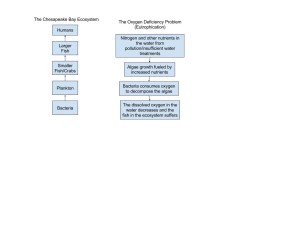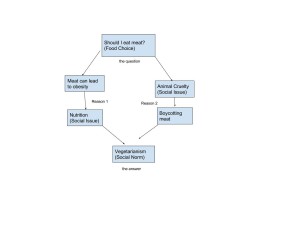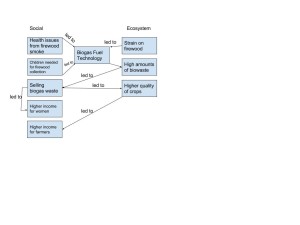First Paragraph: Find and describe an ecosystem service that is currently used for anthropogenic reasons. Determine if this ecosystem will continue to provide services for humanity, or if it is in danger because of human activities in the area.
Second Paragraph: Create a diagram of how the ecosystem works and some of the services supplied.
Third Paragraph: If this ecosystem is being destroyed, are there any steps being taken to reduce or reverse the damage that has been done to ecosystem?
1.) I have chosen to describe the Chesapeake Bay ecosystem. This ecosystem once provided many fishing and food opportunities for humanity. The Chesapeake Bay would supply the city with plenty of fish for local populations. This bay was used primarily for anthropogenic reasons and the abundance of fish in the ecosystem provided the ecosystem service. However, the Bay provides just a fraction of the fish compared to the 60’s. This reduction in fish is a product of the human interaction with the ecosystem. In recent years, society has polluted the ecosystem with different nutrients. These nutrients fueled the growth of algae blooms which in result lowered the dissolved oxygen in the water. The fish were no longer able to survive in these conditions, and therefore the ecosystem has struggled to survive with these conditions.
2.) See the attached Diagram
3.) The ecosystem is being destroyed in this situation. One of the main steps that is being utilized to protect this ecosystem is to reduce pollution. This is reducing the pollution from nitrogen, phosphorus, and other nutrient pollutions. This is because the major issue in the Bay is the low BOD levels. These levels are not allowing the fish to survive in the Bay. The nitrogen and phosphorus are the main cause of the low BOD levels. There are several ways that this is being done. It can be as simple as lowering pollution by recycling, but other efforts include using less fertilizer. This is because fertilizer tends to have plenty of nutrients in it that can run off in to the Bay. Other efforts to restore the Bay include planting Bay grasses in the water to try and increase dissolved oxygen levels.
Info on the Chesapeake Bay taken from the website:
“The Bay EcoSystem.” Chesapeake Bay Program. Accessed April 11, 2016. http://www.chesapeakebay.net/discover/bayecosystem.




